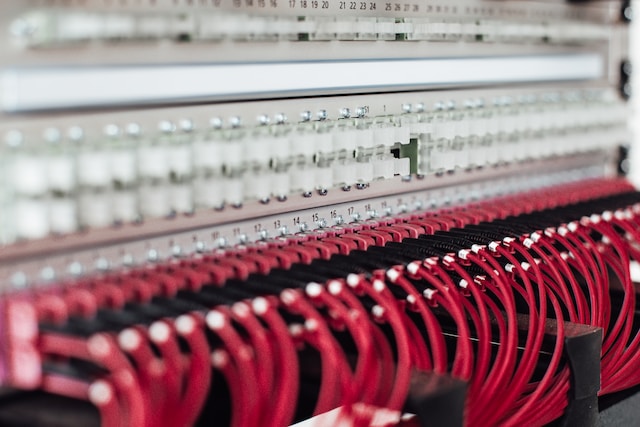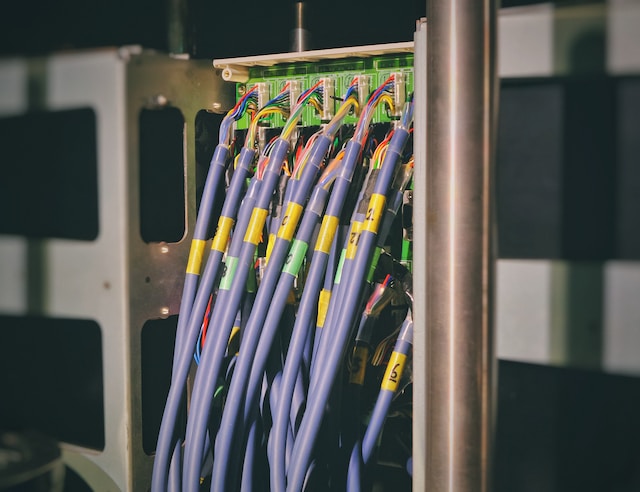
Tips for Network Cable Management
Network Cables are an integral aspect of the modern world. We are living in the era of networking and the internet, after all. However, even though network cables are extremely important for the modern world, they are often overlooked and unmanaged. After all, they are hidden away and protected. That said, unmanaged network cables can become a problem in the long run. Sure, it won't affect you now, but what about when you have to fix a problem or make changes? The best solution to avoid problems during maintenance and making changes is to manage network cables well. But how do you do it?
In this blog, we talk about the tips for network cable management. So, with this in mind, let's get started.
1. Plan Your Cable Route
Before you install or repair network cables, you should always plan your cable route. For this, you should consider the most direct route possible. Doing this ensures that you avoid unnecessary twists and turns. Furthermore, it also ensures that you do not spend too much on getting extra cables. This makes the process of network cable management efficient and cost-effective.
2. Ensure Optimal Cable Length

One of the first things you can do to manage your network cable is to ensure that the cable is of the right length. If the cable is too short, you can't make it function well; if it is too long, it becomes a hassle to manage it later on. Sure, you can make the network function perfectly with long cables, but it can get messy when you need to repair it or change it later on.
3. Label Your Cables
Another great tip for network cable management is to label your cables clearly. For this, you can either label them individually or bundle them and label them in groups. Doing this ensures that you know where each cable goes and its type. This inadvertently makes repairing and managing the network cable easy in the long run.
4. Handle Cable Gently
One of the best ways to ensure the safety of network cables is to handle them gently. Handling the cables gently ensures that they do not get damaged while installing, managing, and repairing network cables. Furthermore, handling network cables gently also ensures that you have time to think about your actions and processes. When it comes to things like network cable management, the more careful you are, the better it is for you.
5. Isolate the Cable by Types
Isolating the cable by type is a great way to manage network cables. Not only does it help you to avoid interference with other types of cables, but it also allows for easy access. Furthermore, doing this also makes connections easier to trace and repair. While it is a bit of a tedious process, it makes repair and maintenance highly efficient. Furthermore, it also enhances the durability of network cables.
6. Color Code Cables

One of the best ways to label cables and manage them is by color-coding them. Doing this allows you to know the various types of cables without needing to think too much. As long as you understand the color code, you can easily find the right type of cable. This process allows you to efficiently repair, maintain, and manage network cables. This, in turn, can lower the effort required to manage network cable and save time.
7. Avoid Sharp Bends
Sharp bends are never good for any form of wires, not just network cables. Therefore, you should always avoid them. This is because sharp bends can cause cables to break and result in data loss and speed loss. Furthermore, sharp bends can also result in irregular network cable behavior. TFurthermore, bending cables sharply can also result in loss of speed, data volume, and uptime. These are often one of the biggest issues one can face while using the network cable. Therefore, you should always avoid sharp bends while installing or repairing network cables.
8. Secure Cables

Another great tip for network cable management is to always secure cables while installing and repairing them. For this, you can use various tools and methods. Securing cable ensures that your cable does not move or sag. Furthermore, doing so also ensures that your cable is protected from interference by the movement and other forms of vibrations in the surroundings. It also prevents thermal issues and prevents strain at critical points.
9. Use Velcro Ties Instead of Zip Ties
While securing network cables, it is always a good idea to use velcro ties instead of zip ties. Why? It is because velcro ties are gentler on the cables, and they are reusable. Furthermore, they also allow for easy adjustment. On the other hand, you need to cut zip ties if you need to repair or adjust the cable. Therefore, using Velcro ties saves you time, effort, and money.
10. Document Your Cable Layout
Last but not least, you should always maintain a detailed document of your cable layout. This allows you to see the types of cables used along with their path and purpose. Furthermore, it also allows you to know the length of the cable and the device it connects to. Having this document enhances your efficiency and effectiveness when repairing and maintaining the network cables.
Conclusion
Network cable management can be a troubling task. However, with some tips for network cable management, you can make this process easier, effective, and efficient. In this blog, we discussed just some of the tips, as this is by far not the exhaustive list of how to manage network cables. Regardless, we hope you found this helpful. If you want further insights into various aspects of home repair, then do check out some of our other blogs. And if you want the best network cable management service in Kathmandu, do remember us at a2z Marmat. Thank you for reading till the end.
FAQs on Tips for Network Cable Management
What is the best way to label network cables?
The best way to label networks is to combine color coding and use clear and understandable labels at both ends of each cable.
Why use Velcro ties instead of zip ties for cable management?
While you can use both velcro ties, velcro ties are reusable and easy to use when compared to zip ties. Furthermore, velcro ties also enable easy repairs. Therefore, it is ideal to use velcro ties instead of zip ties for cable management.


